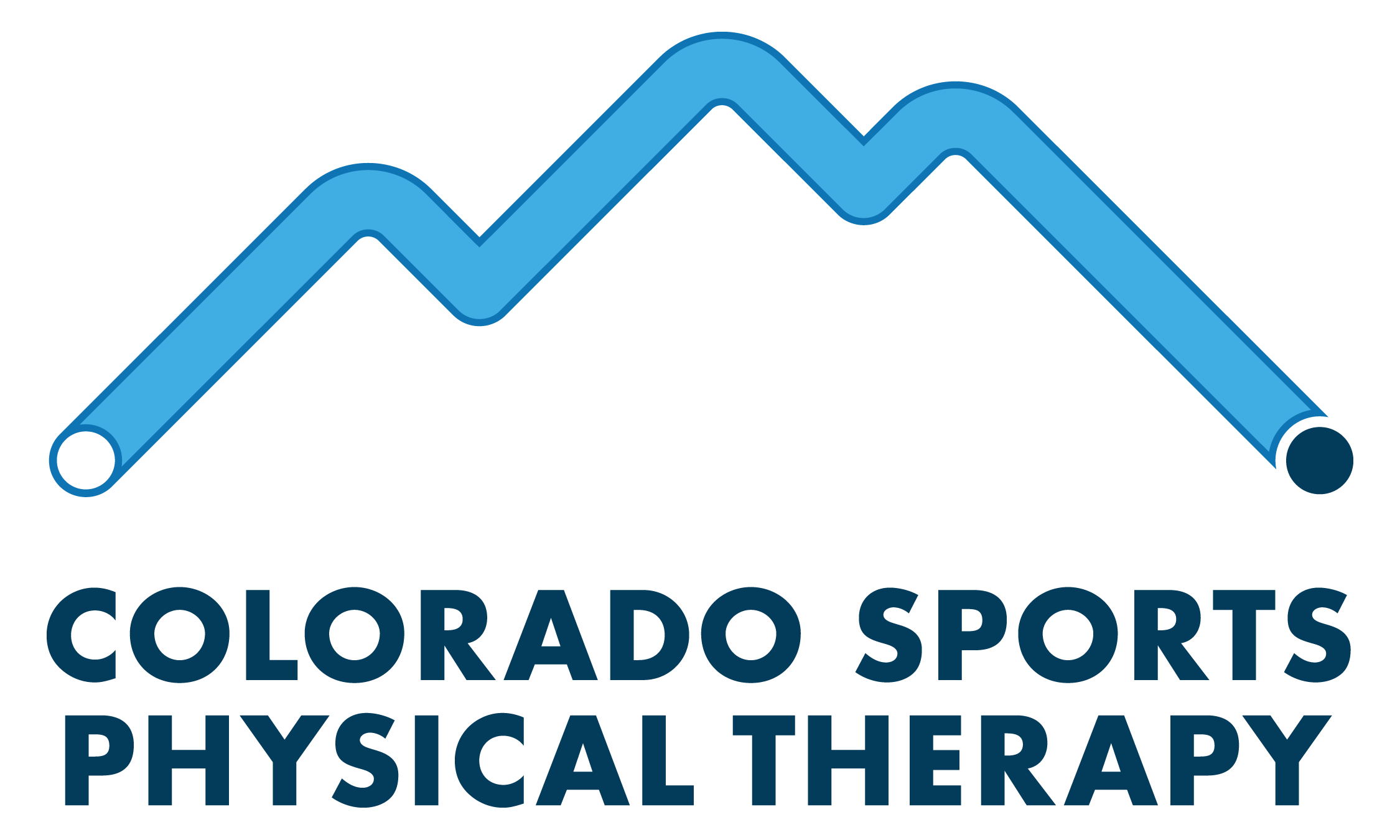Runners Need Strength Training Too!
Runners Need Strength Training Too
The weather is getting nicer and more and more people will be lacing up their running shoes to go out for a run. Living in Colorado, many people have been running throughout the winter, but this is the time for those not-so-die-hard runners to get back out pounding the pavement. As such, this is also the time when physical therapists such as ourselves tend to see an uptick of runners coming to see us with various injuries. In an effort to minimize your risk of injury, and therefore, your risk of having to come see me and listen to my terrible jokes, I am going to let you in on the secret to minimize your risk of injury as a runner. You ready for it?
You need a strength training routine.
I know. Not the answer you were hoping for. But honestly, after treating countless runners in my thirteen years in practice this is the almost universal fix for the myriad of injuries I’ve seen in my running clientele. I’m not here to try to convince you that you need to be spending multiple, hours long sessions in the gym each week lifting massively weighted barbells. I get it - that’s not your thing. You run because you love running. If you loved lifting heavy ass barbells, you would be doing that instead of running. It’s rare to come across someone who loves both of those things. But I’m here to tell you that you can reap the benefits of a strength training program by spending 20-30 minutes, three times a week, often with very little equipment. This will help you run more, run further, run faster and most importantly, run healthier.
Here’s my case, in two brief points.
Point number one: Running moves you through the same movements over and over and over and… well, you get the idea. The same movements very repetitively. Many runners have said to me, “Well I run a lot, so I don’t really need to strength train because my legs get tired from running, so that means I’m building strength!” That’s not true. Running, the way that most recreational athletes perform it, is an aerobic activity. Your legs get tired from repetitive, low threshold contractions. Unfortunately, that is not the recipe for building strength. Strength is built when you are moving a resistance that is very difficult for 8-12 repetitions at a time. Recommended running cadence (number of foot strikes) is in the range of 170-180 per minute, which means that each foot should be taking 85-90 steps per minute. This is well outside the range of what would be considered strength training. Excellent exercise, but not strength training.
Point number two: We’ve established that just running alone isn’t building strength. Now let me tell you the most common causes of most “overuse” injuries that I see in runners. In most runners that I evaluate for general lower extremity pain with no traumatic type of injury (fall, twist, etc) I find they have weakness in the hip and/or the ankle/foot complex. This becomes quite important when we talk about running mechanics. I’ll focus on the hip specifically for this example. Most often, I see that runners have weakness in the lateral hip muscles which perform hip abduction (lifting the leg to the side, away from the other leg.) On the surface, this seems unimportant since runners don’t perform this movement in their sport. However, when the foot is planted on the ground and the hip abductors activate, they perform a very important function in stabilizing the pelvis. If this doesn’t happen, the pelvis will drop, leading to biomechanical inefficiencies at best, and potentially injurious mechanics at worst. For a visual representation of what can happen when there is weakness (or poor coordination) in these muscles, take a look at photo 1.
Inefficiencies such as this become magnified by the number of times they are repeated, leading to stress on the tissues, often resulting in the pain/injury we see in a patient.
While I could talk on this topic all day long, I will leave you with those two points and hope that you might be convinced. If you’re not, come chat with me and I’ll see what I can do about that! ;) But rather than just try to convince you, I will also now leave you with one of my favorite, minimal equipment required, strengthening exercises to address what you see in the photo above.
Band walks: Photo 2
Get a moderate weight resistance band that is either already a loop as shown, or that you can tie in a loop around your ankles as shown in the photo.
With the band around your ankles, get into a slightly squatted position.
Keeping toes pointing forward, walk sideways. Go 10-20 feet then come back to where you started so that the other leg is now leading. Do this 3-5 times.
You should feel some good fatigue in the sides of your hips!
If you want to come talk more about developing a strength training routine to keep you running injury free, or if you maybe already have an injury preventing you from running, give us a shout and we’ll get you all taken care of!
Author: Heather Shaughnessy, PT, DPT

